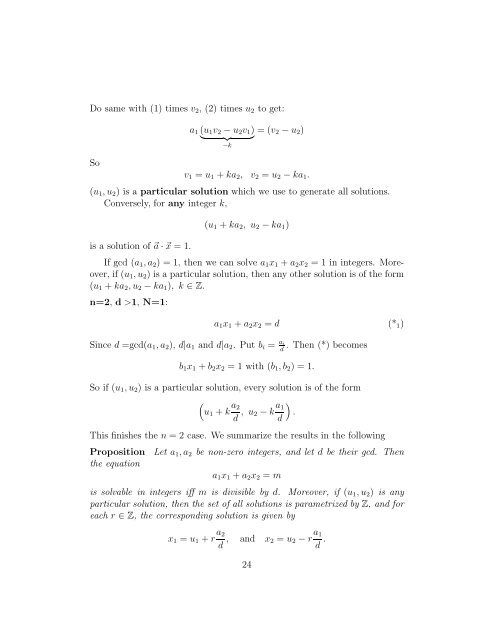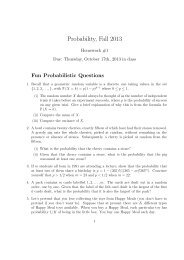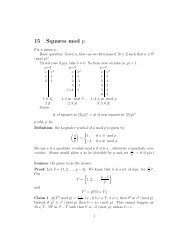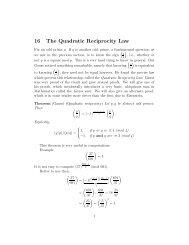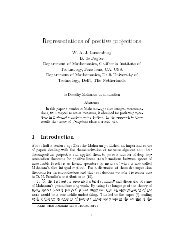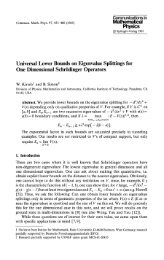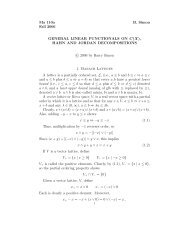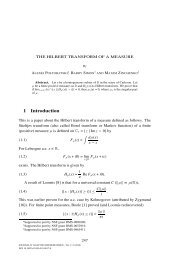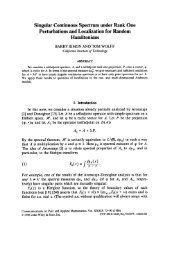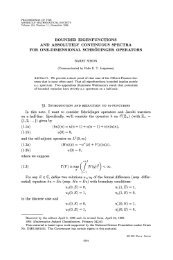1 Basic Notions - Caltech Mathematics Department
1 Basic Notions - Caltech Mathematics Department
1 Basic Notions - Caltech Mathematics Department
Create successful ePaper yourself
Turn your PDF publications into a flip-book with our unique Google optimized e-Paper software.
Do same with (1) times v2, (2)timesu2 to get:<br />
So<br />
a1 (u1v2 − u2v1) =(v2 − u2)<br />
<br />
−k<br />
v1 = u1 + ka2, v2 = u2 − ka1.<br />
(u1,u2) isaparticular solution which we use to generate all solutions.<br />
Conversely, for any integer k,<br />
(u1 + ka2, u2 − ka1)<br />
is a solution of a · x =1.<br />
If gcd (a1,a2) = 1, then we can solve a1x1 + a2x2 = 1 in integers. Moreover,<br />
if (u1,u2) is a particular solution, then any other solution is of the form<br />
(u1 + ka2,u2 − ka1), k∈ Z.<br />
n=2, d >1, N=1:<br />
a1x1 + a2x2 = d (*1)<br />
Since d =gcd(a1,a2), d|a1 and d|a2. Putbi = ai . Then (*) becomes<br />
d<br />
b1x1 + b2x2 =1with(b1,b2) =1.<br />
So if (u1,u2) is a particular solution, every solution is of the form<br />
<br />
u1 + k a2<br />
d ,u2−k a1<br />
<br />
.<br />
d<br />
This finishes the n = 2 case. We summarize the results in the following<br />
Proposition Let a1,a2 be non-zero integers, and let d be their gcd. Then<br />
the equation<br />
a1x1 + a2x2 = m<br />
is solvable in integers iff m is divisible by d. Moreover, if (u1,u2) is any<br />
particular solution, then the set of all solutions is parametrized by Z, andfor<br />
each r ∈ Z, the corresponding solution is given by<br />
x1 = u1 + r a2<br />
d , and x2 = u2 − r a1<br />
d .<br />
24


